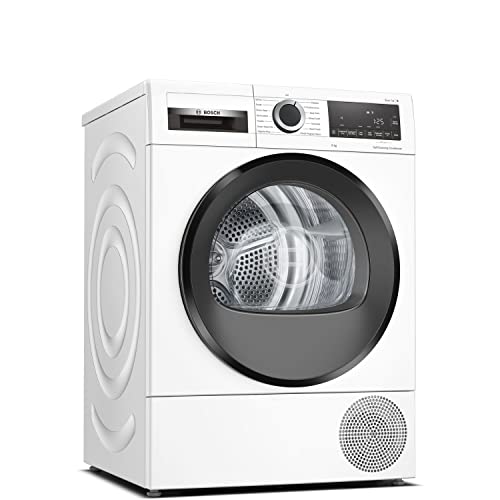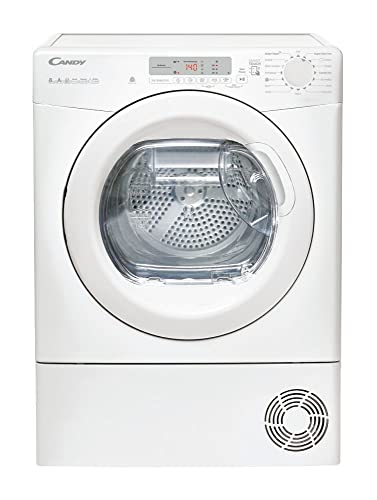Why People Don't Care About Heatpump Dryer
페이지 정보

본문
 What is a Heatpump Dryer?
What is a Heatpump Dryer? A heatpump dryer can be an energy-efficient alternative to a traditional fossil fuel-powered clothes dryer that uses air from outside instead of exhausting it inside. It is more than just an energy saver.
A heatpump dryer can be an energy-efficient alternative to a traditional fossil fuel-powered clothes dryer that uses air from outside instead of exhausting it inside. It is more than just an energy saver.The compressor pumps refrigerant through a second set of coils. This heats the air that is then used to dry the clothes.
Energy Efficiency
A heatpump dryer is a combination of an air compressor and an evaporator to remove the moisture from your clothes. This technology is an excellent alternative for those who want to cut back on their energy usage, but do not have the space or ability to hang clothes on an elongated line or run a traditional dryer. The tumble dryers heat that use heatpump do not require a vent pipe since they are ventless. Instead the air they use is drawn in from outside and then pumped through a filter before being exhausted. This closed-loop system saves energy by not exhausting indoor air that was already heated or cooled prior to entering the house (as traditional dryers do).
This is an excellent option for those who wish to limit their exposure to environmental pollutants, such as pollen, dust and. When the pumped-in air passes through a filter most of the UFPs (Ultrafine Particles) are pulled into condensed water, and then released as water in the form of vapor. This keeps them from being scattered into the air to cause respiratory issues as they would in a normal vented dryer (Sokhansanj 1984).
The energy efficiency of a heater is the main benefit. It can help save up to 50% of the energy required for drying compared to a traditional dryer. It can also save up to 30 percent of the energy used by a gas dryer and up to 40% of the electricity that is used by an electric dryer. It can also save up to 10% of the energy needed for cooling when compared to a conventional dryer.
In the past the majority of research into heat pumps assisted drying was focused exclusively on the heat pump. However, there has been a shift in attention on the overall performance of the system. This performance can be measured in terms of the COP (coefficient of performance) or SMER (specific moisture extraction rate, i.e. the amount of moisture removed per kilowatt-hour), and drying efficiency (Chua et al. 2001).
Heat pump assisted drying is more economical and can produce a superior product than hot air drying. A study by Soponronnarit and Prasertsan found that tomato slices dried using the help of a heat pump dryer had more vibrant color and aroma in comparison to slices dried with a hot air dryer.
Moisture Removal
The evaporator of a heat pump dryer absorbs the water vapour from the fabric as it passes through. The moisture is then removed from the evaporator and then disposed into a drain pan, or it is drained directly from the dryer into a sink or drain pipe. This is one of the major advantages of heat pumps over resistance dryers, which rely on an element of heating to generate the required heat. Heat pump dryers do not add additional humidity to your house and can reduce your expenses and time by reducing drying times.
The heat-pump dryers function in a similar way as conventional dryers, by compressing fluid. When the fluid is compressed it absorbs heat from air surrounding it, and this heat is transferred to the wet fabric. Heat-pump models are more energy efficient and can reduce your utility bills by up to 30%.
Heat-pump dryers also have smaller footprint than conventional dryers, and require less maintenance. They are made up of fewer components and do not include any resistance heaters which are the cause of energy waste in most conventional dryers. However, heat-pump dryers can have lint screens that need to be cleaned regularly and may need regular cleaning of the condenser coils, which are responsible for the transfer of heat from the evaporator.
The performance of a Heat Pump Dryer may be measured by measuring the specific humidity extraction rate (SMER) which is the dryer capacity. And the energy efficiency of a Heat Pump Dryer can be determined by its COP, or coefficient of performance. This is defined as the ratio of the heat that is absorbed by the condenser as well as the work performed by the compressor. In this study the performance of a heat-pump dryer (HPD) was tested by testing it with different designs and loads (4 kg and 7.4 kg). The HPD was equipped with a desiccant-wheel adsorption system on the dryer's inlet.
The drying processes of the four designs of the HPD were examined by testing the SMER at a constant volumetric flowrate of 100 milliliters per hour. The three designs all reached an equilibrium in the drying process. The performance of the HPD was enhanced when the adsorption device was positioned in the dryer's inlet instead of outlet.
Fabric Care
The lower temperatures for drying of heat pump dryers shield fabrics from damage caused by excessive heat, helping extend their lifespan and prevent shrinkage. They also provide a more gentle cleaning experience than vented dryers, which makes them an ideal choice for delicate or natural fabrics, such as wool and cotton.
The energy efficiency and fabric care capabilities of heat pump dryers are enhanced by proper maintenance and use. Cleaning the lint filter and condenser units, emptying the water containers and Heat Pump Dryers clearing the air intake vent on a regular basis will ensure that your dryer operates at its best.
Regularly cleaning the lint filter inside your heat pump dryer will help prevent the accumulation of lint which could cause the appliance to overheat and reduce performance. After every drying cycle, it is essential to remove and thoroughly clean the lint filter using warm water. Let it dry completely before reinstalling it into the dryer.
Emptying your heat pump dryer's water container will prevent excess water from flooding and causing damage to your appliance. This can be done by draining the water out of the container using an hose or sink. Then, rinse and let the container dry completely before placing it back in your dryer.
It is essential to select the appropriate temperature for each load of washing in order to maintain the best quality of care for your fabric. To prevent damage to synthetic fabrics and sportswear it is recommended to use lower temperatures to dry. Upholstery and cotton fabrics can withstand higher temperatures. Bosch heat pump drying systems offer a variety of drying programs to meet the needs of different types of fabrics and washing conditions.
A heat pump dryer that is equipped with PerfectDry can automatically adjust the duration of each cycle and the temperature to the desired temperature. This reduces the need for guesswork and saves you time. The 40' Express Cycle, for example, can dry a small load of 2 pounds of laundry in just over an hours.
Whether you're looking for an eco-friendly, efficient laundry solution or just need to improve your laundry area, a heat pump dryer is the best choice. Browse Aztec's selection of top-rated brands and find a heat pump dryer that meets your requirements.
Longevity
While heat pump dryers have been in use for a while in Europe and other countries, they're still relatively new to the American market. The heat pump tumble dryers pump dryer is one of two types of ventless dryers. The other is the condenser dryer. Heat pump dryers are becoming more popular despite their disadvantages.
Heat pump dryers reuse the energy that they use to dry the laundry. This means that heat-pump dryers consume less power than standard dryers, and they last longer.
Heat-pump dryers are, in addition to being environmentally friendly are also more gentle on clothing. They can shield high-end fabrics since they don't add heat to the cycle. They are therefore perfect for delicate fabrics like cashmere and wool. Another advantage of a heat-pump dryer is that it doesn't cause as many wrinkles as a conventional dryer and it can cut down on the amount of time you're spending ironing your clothes.
However, a dryer with a heat pump doesn't completely eliminate the need for maintenance. Like all dryers, it is necessary to clean the lint screen and bottom container regularly. You will also need to ensure that the dryer is leveled so that it does not overwork its motor. Regular maintenance can greatly extend the life of a heat pump dryer.
A model with a heat pump has a longer life span than traditional vented models. Traditional vented dryers need vent pipes that connect to the outside of your house. The pipe is required to eliminate excess moisture and heat however it can get clogged with debris in time. Regular maintenance can prolong the lifespan of a dryer and it is much easier than removing an entire wall from your home.
Heating-pump drying systems are more resistant to humidity than traditional vented models, and can be run at lower temperatures, which is beneficial for those who have sensitive or allergic skin. Some dryers with heat-pump technology can operate on a standard 120-volt 15-amp electrical circuit. This is essential for those who live in homes that have limited wiring.
- 이전글10 Movies Like Harry Potter To look at In the event you Love Magical Adventures 24.04.01
- 다음글Renault Key Replacement Near Me Tips From The Best In The Industry 24.04.01
댓글목록
등록된 댓글이 없습니다.
